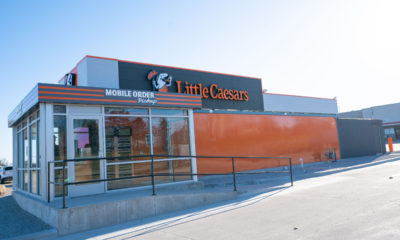Two recent surveys show a softening in the retail leasing market, despite some encouraging signs that an economic recovery may be under way.
In a survey of 38 markets, Marcus & Millichap (Encino, Calif.), which specializes in real estate investments, found that the vacancy rate for retail properties of 10,000 square feet or more had edged up from 10.5 percent last year to 10.7 percent in the first half of this year.
And Reis Inc., a real estate research company in New York, said that at shopping malls with department-store anchors, vacancies rose from 5.5 percent in the first quarter of this year to 5.7 percent in the second quarter.
The Reis data show that the second-quarter vacancy rate at the malls actually represented an improvement over the period from the fourth quarter of 2001 through last year. But Tom Dwyer, Reis' manager of retail solutions, told The New York Times that that quarter — in the aftermath of September 11 — reflected widespread fears that shopping malls might be targets for terrorists and discouraged retail tenants from taking space. The current trend is disquieting because it can probably no longer be attributed to anxiety over terrorism. “It's definitely something to watch,” he said, “because retail has very much held together while the other major sectors have not had an easy time.”
Of the retail categories surveyed by Marcus & Millichap, the hardest hit were the power centers, with 250,000 to 600,000 square feet of space and three or more big-box stores. The researcher said that during the last decade, this category was overbuilt. Vacancy rates are about 10 percent, an improvement over the late 1990s.
At the same time, said Marcus & Millichap, smaller shopping centers have lost tenants as supermarkets have been unable to withstand competition from lower-price retailers — especially from Wal-Mart, which now has freestanding supermarkets. Other space has emptied as chains like Kmart filed for bankruptcy protection and closed underperforming stores. But if the shopping center is up-to-date and well-located, new tenants can usually be found, the researchers said.
Advertisement
Surveying strip malls, the Reis survey found that the average vacancy rate during the second quarter was 6.8 percent, the lowest level since the last quarter of 2001. Retailers have continued to lease space, the report said, “while lenders and developers have exercised prudence in not flooding the market.” So far this year, no new space has been added in 13 of the top 48 markets, the report said.
As developers continue to come up with new concepts and configurations for shopping centers, many people around the country are signaling a preference for shopping near their homes or offices. Hessam Nadji, the managing director in charge of research at Marcus & Millichap, told The Times that retail outlets in central business districts throughout the nation have suffered during the economic downturn but that downtown shopping areas can be expected to prosper in cities that have turned these neighborhoods into 24-hour communities.
One such city is Seattle, where, despite an unemployment rate of 7.2 percent, one of the highest in the country, retail vacancies in the central business district at the end of the second quarter stood at 3.7 percent, representing a 2.76 percentage point decline in vacancies since the second half of 2002. In downtown Minneapolis, by contrast, the retail vacancy rate in January was 13.4 percent, 2.4 percentage points greater than the previous January. A local real estate executive told The Times that the Minneapolis central business district was not convenient and had stores like Saks Fifth Ave. that might be considered too expensive. He said the area was “an 8-to-5 workplace,” adding, “While there's growing population downtown, it's not enough to support retail.”
Nadji said he expects the retail vacancy rate to keep going up through the end of the year. “But then a correction should ensue,” he said. “A lot of retailers have put their expansion plans on hold. They're waiting to see if the economic recovery is real.”
Both researchers insisted that the slight increase in vacancies has not affected rents, which are still increasing, although at a slower rate than that of a few years ago. Nor has it seemed to slow the feverish investment market. Sales of retail properties are continuing to outpace other forms of real estate investment.

 Headlines1 week ago
Headlines1 week ago
 Headlines1 week ago
Headlines1 week ago
 Headlines1 week ago
Headlines1 week ago
 Designer Dozen2 weeks ago
Designer Dozen2 weeks ago
 Headlines6 days ago
Headlines6 days ago
 Headlines2 weeks ago
Headlines2 weeks ago
 Designer Dozen6 days ago
Designer Dozen6 days ago














